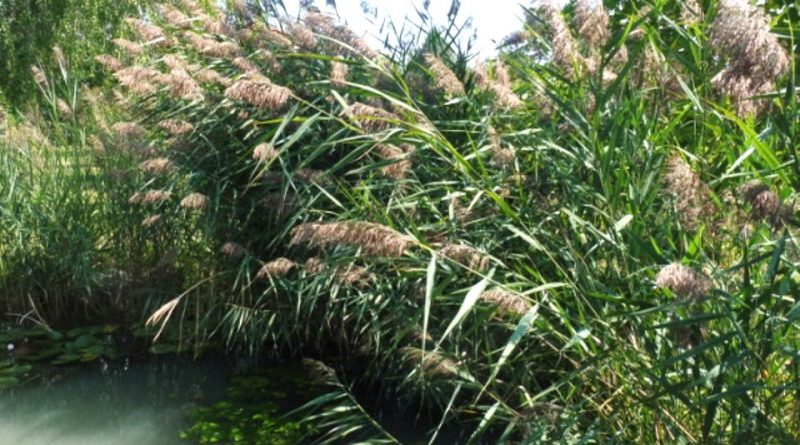Phragmites australis
Phragmites australis
The marsh reed (Phragmites australis (Cav.) Trin. Ex Steud.) Is a perennial herbaceous plant of the Poaceae family.
Systematics –
The Phragmites australis belongs to the Eukaryota Domain, to the Plantae Kingdom, to the Magnoliophyta Division, to the Liliopsida Class, to the Poales Order, to the Poaceae Family, to the Arundinoideae Subfamily and therefore to the Genus Phragmites and to the Species P. australis.
Etymology –
The name of the genus comes from the Greek “phragma, phragmos, phragmítes”, which means wall, fence, fence, hedge, due to the fact that this plant forms dense and dense populations, often impenetrable or perhaps also because they made fences and fences. The plant is already mentioned by Pliny with this name. The specific epithet comes instead from the agg. Latin “australis, -is, -e”, from “auster”, from the south, south.
Geographic Distribution and Habitat –
The swamp straw appears to be native to Eurasia but is widespread throughout the world. This plant grows in dense reeds near marshes and wetlands, on the banks of lakes, ponds, ditches and in uncultivated wet lands and tolerates a moderate level of salinity.
Description –
The swamp straw is a perennial herbaceous species, rhizomatous that can reach even 2-4 meters in height. The leaves of this species are opposite, broad and laminar, long from 15 to 60 cm and 1 – 6 cm broad, glabrous, green or glaucous. At the top of the stem of the swamp straw there is a panicle of brown or violet color, up to 40 centimeters long. It sprouts in March and blooms in July.
Cultivation –
Since the Phragmites australis has a high effective water purification, both for ponds, bioparks, biolags, koi carp tanks and phytodepuration plants is a species that can find great applications in the phytodepuration technique. It is in fact the most effective marsh plant in the purification of water from organic pollutants (such as fish excrement), and is also effective for the absorption of heavy metals dissolved in water. The swamp straw prefers an exposure in full sun or partial shade and resists very cold temperatures.
Uses and Traditions –
The rhizome of the swamp straw contains bitter substances, small amounts of alkaloids, potassium salts and resins. It possesses sudorific and diuretic properties, similar to those of Arundo donax L., and is used to treat fever, flu, colds, bronchitis and to reduce edema. The American Indians used the thin reddish seeds to make flour, the young boiled sprouts as vegetables, the ground roots and turned into flour and drank the sweet sap. In China, the rhizome and roots find applications to treat nausea, urinary problems and arthritis. The young shoots are often consumed both raw and cooked.
In addition, the hard and stalks that persist throughout the winter and the wide and leathery leaves are an excellent material for making thatched roofs, mats, racks, baskets, paper and even pipes. The cobs of the Phragmites australis are often used to make brushes. Plants that grow near brackish waters seem to produce better and more resistant barrels.
The plant plays an interesting ecological role as it offers shelters and nesting places for many species of birds.
Preparation Mode –
The methods of preparation of this species can be for food or therapeutic purposes. For food purposes you can use the young boiled sprouts as vegetables; while from the seeds it is possible to obtain a food flour. For the therapeutic use the rhizome and the roots can be used.
Guido Bissanti
Sources
– Wikipedia, the free encyclopedia.
– Treben M., 2000. Health from the Pharmacy of the Lord, Advice and experience with medicinal herbs, Ennsthaler Publisher
– Pignatti S., 1982. Flora of Italy, Edagricole, Bologna.
– Conti F., Abbate G., Alessandrini A., Blasi C. (edited by), 2005. An annotated checklist of the Italian vascular flora, Palombi Editore.
Warning: Pharmaceutical applications and alimurgical uses are indicated for informational purposes only and do not in any way represent a medical prescription; there is therefore no liability for their use for curative, aesthetic or food purposes.


